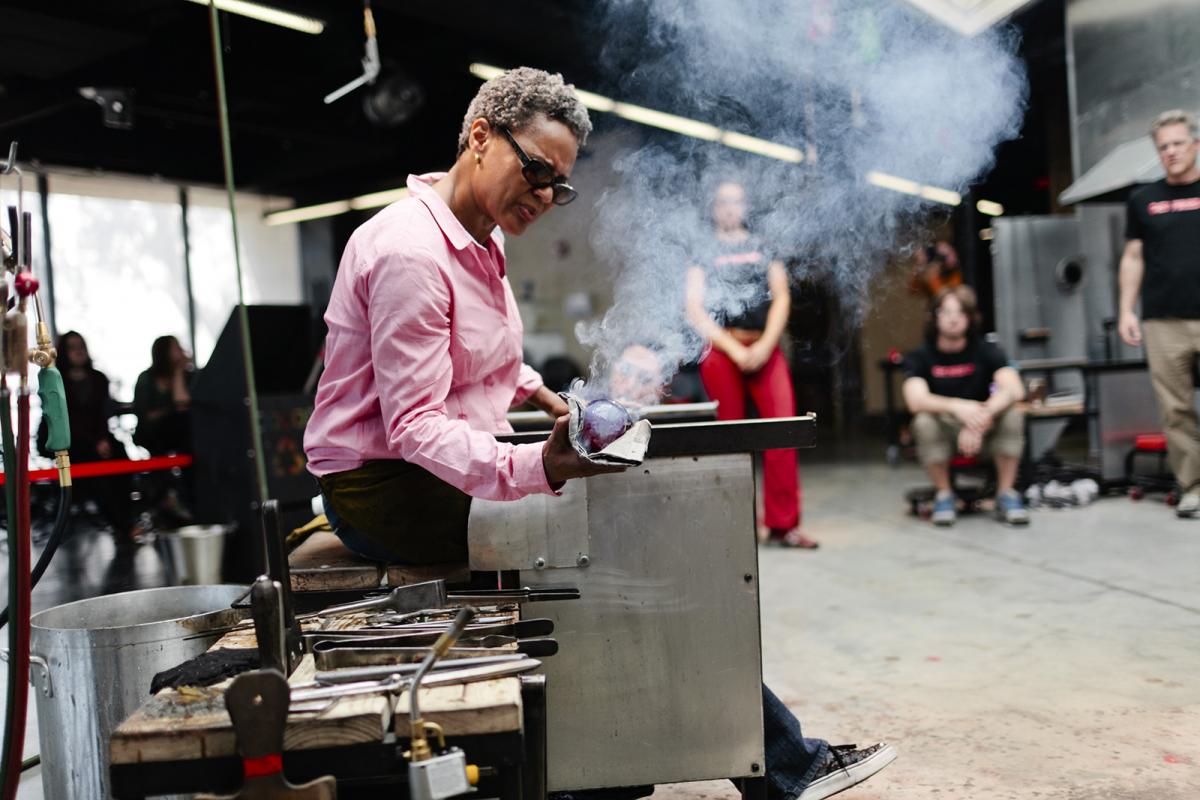Debora Moore (b. 1960, resides Seattle) has explored the expressive potential of flora through glass since the late 1980s. She has focused largely on orchids, which are informed by her deep engagement with nature. Moore’s field study has taken her around the globe to observe and sketch specimens, including trips to India, Antarctica, the Caribbean, and Southeast Asia. Moore’s work belongs to a long history of representing plants in glass that ranges from ancient renderings to the botanical studies of nineteenth-century Bohemian craftsmen Leopold and Rudolf Blaschka.
Even with her intensive study, Moore is interested less in realism than in how, through glass, she can capture and transport a personal experience with the beauty, wonder, and resilience of the natural world. Her ability to achieve this goal is a result of mastery cultivated across years as an integral figure in the storied glass community of the Pacific Northwest, home to the Pilchuck School of Glass. Moore began her study there in the 1990s and worked as a member of founder Dale Chihuly’s glassblowing team. A trailblazer in many ways, Moore was the first female and first African American resident at the storied Abate Zanetti on Murano, the Italian island that became a glass powerhouse starting in the thirteenth century.
Debora Moore’s new tour de force series, Arboria (2018), featured in this exhibition, has branched out from the orchid to focus on four life-size flowering trees of different varieties: cherry, magnolia, winter plum, and wisteria. This work presents a new chapter in the long history of representing plants in glass, which ranges from ancient renderings to nineteenth-century models used for scientific study.
On the Blog
Eye Level, February 18, 2021, “Debora Moore’s Glass Sculptures are Rooted in Nature”
Arboria Series
The Arboria series—a suite of immaculately crafted and evocative glass trees—is Moore’s most recent tour de force. The project began nearly a decade ago, as images of delicate, gravity-defying trees envisioned in the artist’s sketchbooks. Moore was able to bring these drawings into reality at the invitation of the Tacoma Art Museum, which commissioned her to produce work to mark the opening of its Benaroya wing in 2018. Arboria blends observations of nature from across Moore’s lifetime into four human-scaled trees loosely corresponding to the cycle of the seasons, titled Wisteria, Magnolia, Cherry, and Winter Plum.
The two-year process of creating these works began at a quarry, where Moore selected natural stones as bases. She then blew glass directly over the rock’s surface, using nature as her mold. Moore’s ingenious method for hiding her joins adds to the illusionary magic in her works: a “liquid skin” composed of silicone, crushed glass, and pigment is applied in irregular patches for a seamless finish. The finished trees are full of beauty in contradiction, composed of glass manipulated in ways that seem to defy the possibilities of the medium. They are strong and fragile, natural and fabricated, technically astonishing and seemingly effortless. Just like nature, their beauty derives in no small part from their persistence.






























